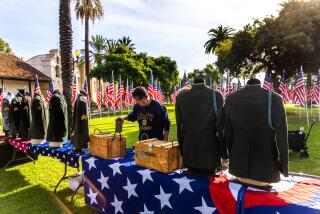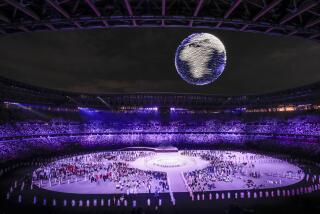In Memoriam
- Share via
We were up in sunny Vancouver the other day, wandering around Expo ’86. When we decided to take in a few pavilions, we headed for those with short or non-existent lines. We looked in on the Ivory Coast, which had a huge photograph of President Felix Houphouet-Boigny and some excellent primitive sculpture, and then Cuba, which seemed to have no photograph of President Fidel Castro but did have some excellent cigars, freshly rolled on the premises.
We passed up California (oddly called The Californias), because the line was much too long, in favor of the United States (only a 10-minute wait) and the Soviet Union (no wait at all).
Once inside the United States pavilion, we found ourselves exchanging looks of disbelief, along with everybody else. The whole show was about the wonders of manned space travel, NASA all the way, the space shuttle and the space station. There were a couple of “In Memoriam” plaques, one listing the crew of the Challenger, but it looked like, and was, an afterthought to an exhibit planned long before the disaster. At one point we took off in a simulated shuttle launch: The rocket shuddered, rose slowly; the seconds off the pad were counted off, the flames roared . . . . The nice young guides tried as hard as they could: “Was the first astronaut male or female?” “You’re wrong, female: a chimpanzee!” But we could not quite shake off a quite unintended presentiment of mortality and of human tragedy.
In the Soviet pavilion we were greeted by an aggressively Socialist Realist statue of Lenin. The Soviet pavilion, too, featured space, with a number of satellites on display, but with great pride the Soviets presented something the Americans had left out: a large exhibit, complete with models, touting the wonders of nuclear power with an exhibit clearly planned long before Chernobyl and nothing to replace it at the last minute.
We did not stop to see whether the Soviets, too, had an “In Memoriam” tablet.
More to Read
Sign up for The Wild
We’ll help you find the best places to hike, bike and run, as well as the perfect silent spots for meditation and yoga.
You may occasionally receive promotional content from the Los Angeles Times.






